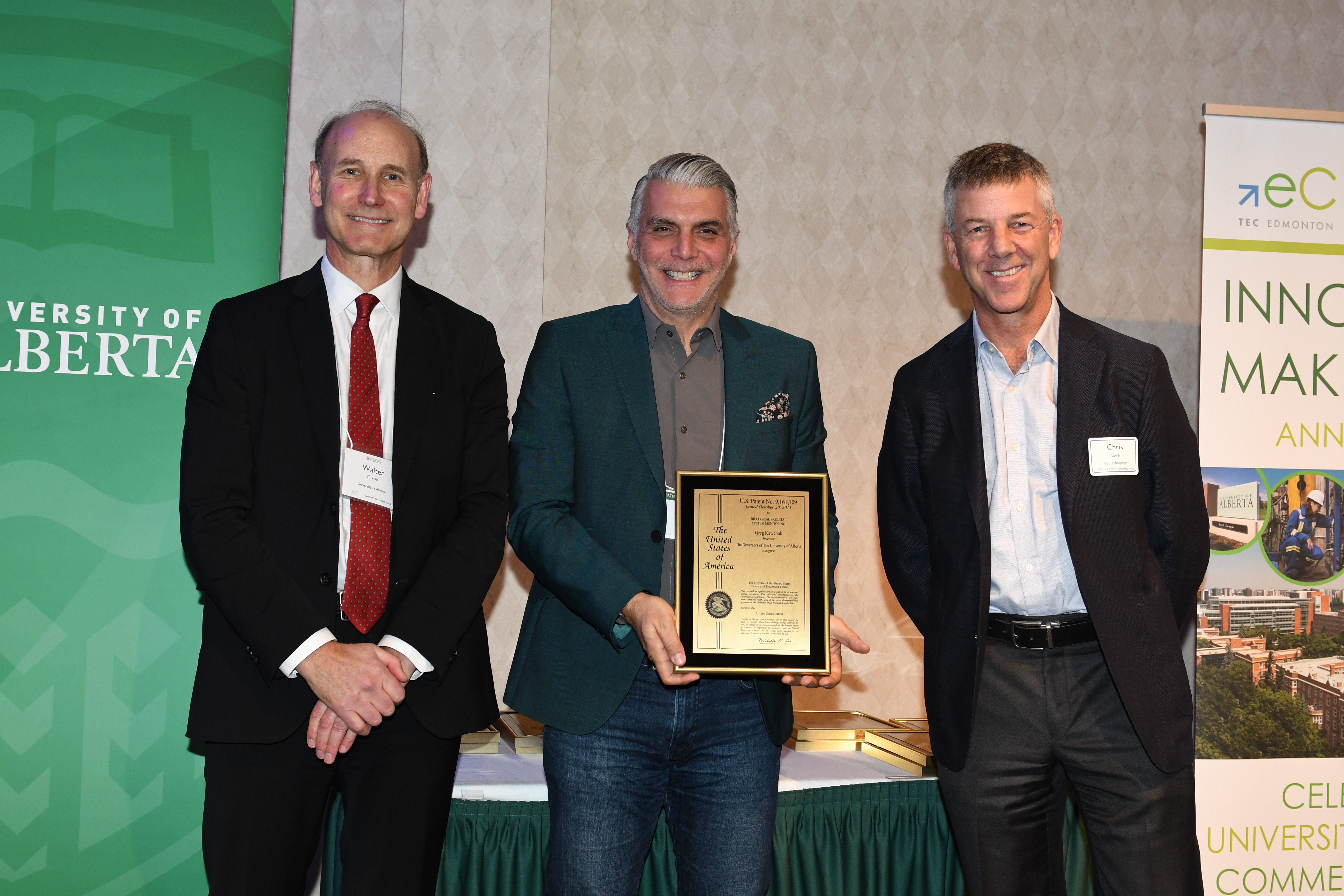
Dr. Greg Kawchuk accepts his 2016 Patent Award at TEC Edmonton's annual Innovation Makes Sense event on October 13. Photo supplied by Dale MacMillan.
Greg Kawchuk says he's collected a long list of issues over the years. One of these issues, diagnosing back pain, has led to a patented vibration approach, earning the University of Alberta researcher a 2016 Patent Award at TEC Edmonton's annual Innovation Makes Sense event on October 13.
"For 15 years as a clinician, I collected a long list of problems with physical assessment that I thought needed improvement. Now as a scientist, I'm still working my way through that list-if not adding new challenges every day!" said Kawchuk, professor of physical therapy in the Faculty of Rehabilitation Medicine.
Kawchuk's Biological Skeletal System Monitoring US patent was granted in October 2015. The technology is currently protected by patent in Australia and Japan as well, and the patent process is ongoing in other countries including Canada.
With his successful patent and ongoing related research, Kawchuk is one step closer to better identifying causes of back problems toward developing more effective preventative measures and treatments. Many people suffer from back pain, but it is often difficult to diagnose, despite existing tools like ultrasound and x-ray machines. Kawchuk's patent covers a new method and system to assess injuries, pathologies and fitness of the back and spine.
"The technology is a little like seismic testing, but instead of using explosions to locate the oil, we apply gentle vibrations to the spine to locate problems," explained Kawchuk.
With help from several UAlberta students, Kawchuk developed the concept and then validated the idea academically over a number of years. Once they had the foundation in place, it took a few more years before the technology was patented. From there, Kawchuk's colleagues and collaborators helped spin off the technology, which is now licensed by a company called VibeDx.
"We have completed our first clinical trials which were very promising. Now, we are integrating some very recent advances in ultrasound technology that will improve our ability to not only find spinal problems, but to determine their severity."
As for his recent TEC Edmonton award, Kawchuk is happy that those who supported his research are being recognized.
"It's a very important recognition, not only for the numerous students, collaborators and associates who worked very hard on this project, but the award also raises awareness that the U of A produces more than students and research papers-we produce ideas that help the health of our community as well as develop business here in Alberta."